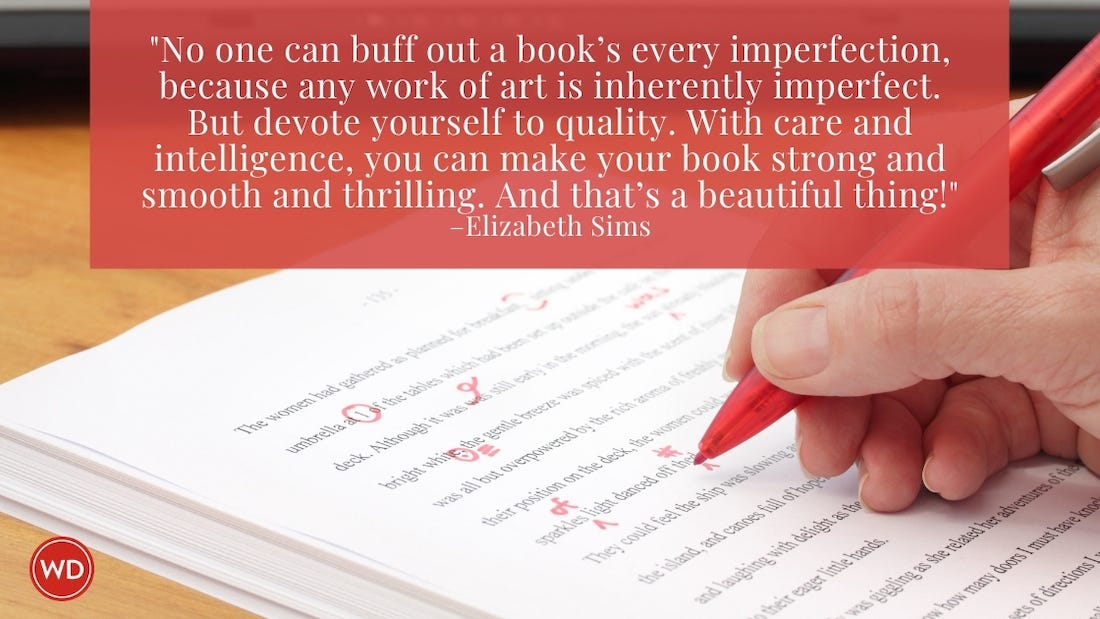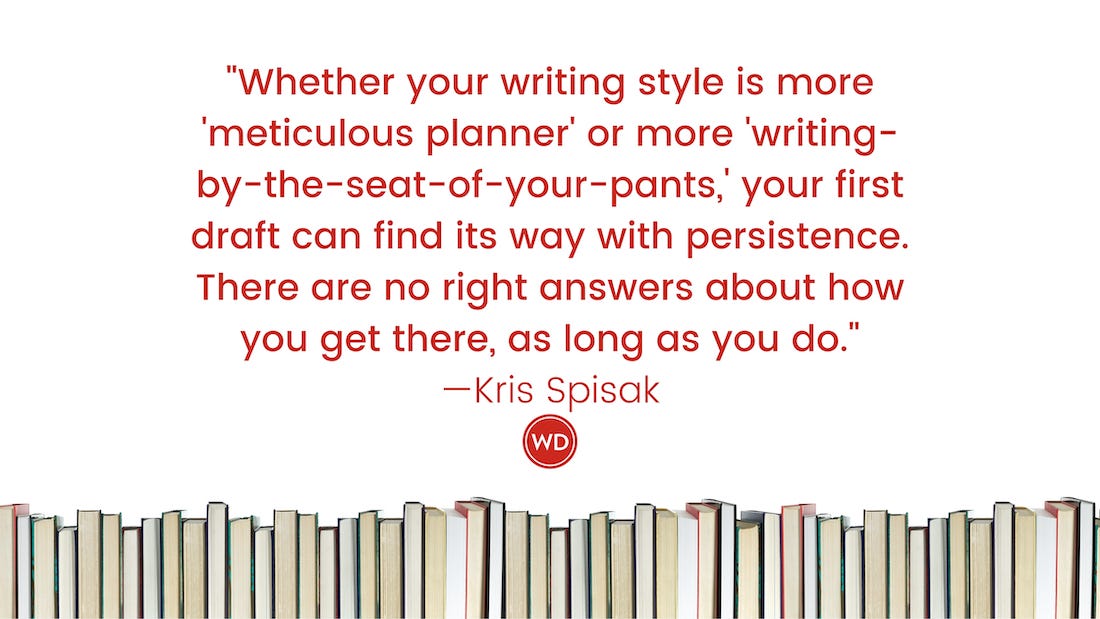Choosing the Best Outline Method for You
The following are just a handful of suggested outlining techniques that may work for your writing. Which method is best suited for you? Find out here.
All artists have their tools. For a painter, it’s a paintbrush; for a sculptor, it’s a chisel. For a novelist, it’s an outline. But not just anybody with a paintbrush or a chisel is an artist. You must first learn how to use your artist’s tool properly in order to create something that will invite others—complete strangers, most often—to spend time with what you’ve created, to think about it long after they’ve left the art gallery or museum, or after they’ve closed the book. That’s the deepest hope of every serious artist—to create a lasting, thoughtful reflection on the human experience.
However, when some writers hear the word outline, they run screaming for the hills. These individuals believe that writing is about the process of discovery—that their characters reveal their personalities through the process of writing. How, pray tell, can you know what a character will do before he has even done it?
Outlines are not meant to strictly enforce adherence to one rigid perception of your novel. That’s the myth. Instead, think of your outline simply as a suggestion. Think of it, perhaps, like a recipe. You can follow a recipe exactly for, say, a cheesecake, or you can add a bit of chocolate to the batter, and poof—chocolate cheesecake! Or, you can add a graham cracker crust and some cherries to the top, and you’ve got a different version of the same classic. Recipes guide us—but creativity still belongs to the head chef.
As your novel progresses, you may find yourself editing your outline—and as your novel more fully develops, you might find yourself discarding your outline altogether. What’s important, however, is that you take the necessary time to think through characters and plotlines to make sure your initial ideas are sustainable. Police detectives are required, by their job description, to follow all leads, even dead ones. Fortunately, novelists bear no such responsibility. In fact, the more time you spend upfront eliminating flat characters and dead plotlines, the less time you’ll waste during the writing process itself—and the more time you can dedicate to productive writing.
Testing your character and plot ideas through the outlining process will allow you to examine whether or not each idea is rich, compelling, and sustainable—or simply a clever notion that’s better left for cocktail hour conversation. (“Hey, did you hear the one about …”)
The following are just a handful of suggested outlining techniques that may work for your writing. Which method is best suited for you?
The “Structure-Plus” Outline
The structure-plus outline is the most traditional method, yielding the kind of outline that looks most similar to the one you were likely taught to create by your fourth-grade teacher. These outlines contain detailed written descriptions of the individual scenes that will progress in a linear fashion throughout your novel.
The most common kind of structural outline can be roughly divided into three parts, or three “acts,” as they are often termed. Act 1 introduces (characters and plot situations), Act 2 complicates (the main character wants something, but plot complications stand in her way), and Act 3 resolves (the character either gets what she wants or doesn’t get what she wants). The “plus” in the structure-plus outline will ask you to name the setting of each scene, the characters involved, and the motivation or purpose of the scene. A structure-plus outline might look something like this:
I. SETTING: The back room at Spaghetti O’Plenty; 5 p.m.
CHARACTERS: Rhys; his girlfriend, Trina; Trina’s manager at the restaurant
PURPOSE: To complicate the plot and build tension between Rhys and Trina
a. Rhys gets his acceptance letter to a prestigious art school and, excited, goes to Trina’s work with the intention of telling her.
i. Trina goes on break and takes him to the back room.
ii. “I need to tell you something,” Trina says. “I’m pregnant.”
iii. Trina’s manager interrupts, “Trina, we need you on Table 7.”
b. Rhys is shocked and can feel his dream of being a painter slipping away.
i. “What are you going to do?” Rhys asks.
ii. “Me? What am I going to do? We’re in this together,” Trina says, upset.
iii. Trina’s manager comes in and sees her crying. “Leave her alone and get out of here,” he says. “Trina, I said Table 7.”
c. Rhys leaves the restaurant, crumpling up the letter and throwing it away on his way out.
The structure-plus outline is the most thorough of the outline varieties listed here. Drafting a structure-plus outline will likely take you more time before you write your novel, but working with an outline of this nature can save a tremendous amount of valuable time during the actual writing of your story. Remember, the more thinking you do upfront, especially thinking that involves the logistics of your plot and characters, the more time you’ll free up later in the process for creating, developing, and writing.
At a Glance:
PROS TO THIS TYPE OF OUTLINE: Very detailed. In fact, you can add as many details as you’d like.
CONS: Not as easy to physically manipulate the information once you begin writing.
The Signpost Outline
If you are resistant to the outlining process in general, you might find the signpost outline to be better suited for your needs. In this kind of outline, you’ll fill in placeholders, which briefly note the types of scenes you’ll need, including the characters and the setting and a general idea of what happens, but not necessarily the details. For the signpost outline, you’ll lay the groundwork for the basics upfront, and then you’ll develop the nuances of the scenes as you write. Mark Twain used a kind of signpost outline in creating The Adventures of Tom Sawyer. He had a general idea of where the story would go and how the novel would be organized, but the specifics were left until the drafting stage.
You might know that in one scene your protagonist, Sully, confronts the man he believes to be stalking his wife, Berta. You might know this scene contains a lot of action, a chase, some dialogue toward the end, and the dramatic realization that the stalker is really the biological father of Berta—a man who abandoned her (and her mother) when she was young. Given this information, a signpost outline might look like this:
Scene 6: Action Scene
SETTING: Sully’s backyard and the woods surrounding his property
CHARACTERS: Sully, the Stalker
PLOT: Sully sees the Stalker again, peeking in through the kitchen window to get a glimpse of Berta. Sully grabs his pistol and confronts the man, who runs into the woods. Sully chases him. The man stumbles, and Sully finally catches up. He points the gun at the Stalker and forces him to talk. Dialogue ensues. Man reveals he’s Berta’s father.
Scene 7: Contemplative/Interior scene
SETTING: The bed-and-breakfast where Berta works as a housekeeper
CHARACTERS: Berta; some guests of the inn; Berta’s boss, Larrin
PLOT: Berta goes about her daily task of cleaning the guest rooms, changing linens, scrubbing floors. She contemplates whether or not she wants to accept her father into her life. She feels loyal to her dead mother, who was betrayed by this man. But he also has money—he’s a retired CIA agent—and he could finally help provide for Berta and her family. She could quit the job at the inn. As she cleans in this scene and reflects on her dilemma, several guests and even her boss confront her with ridiculous demands, like refilling the cotton swabs in Room 22.
Scene 8: Dialogue Scene
SETTING: The rolling park along the river
CHARACTERS: Berta and her father
PLOT: Berta and her father meet for the first time to talk. Berta’s father reveals that he left the family because his job was too dangerous (he was, after all, a CIA operative) and he didn’t want it to affect those he loved most. Berta is moved by her father’s attention, yet she still distrusts him. Aren’t CIA agents trained to lie?
The signpost outline is a good choice if you’re more of a big-picture thinker. This kind of outline gives you a good amount of freedom upfront, but on the flip side, it doesn’t work through all of the logistical details of your novel, which will mean you’ll need to spend more time doing so during the actual writing process.
At a Glance:
PROS TO THIS TYPE OF OUTLINE: A good choice for those who scorn outlining; allows for more creative discovery during the writing process.
CONS: Not as thorough; scenes not clearly mapped, which can result in potential dead ends later.
The Notecard Technique
Do you remember using flashcards when you were learning something simple back in elementary school—say, the multiplication table or vocabulary words? These cards were excellent learning tools for two main reasons: 1) They were portable, so you could take them with you anywhere; 2) You could mix up the cards, shuffling them so you weren’t just memorizing the answers in the order of the cards.
Notecards can be used to outline your novel and offer similar advantages. Let each individual card represent one scene of your novel; on it, list the setting and characters involved, as well as the major plot details and the scene’s purpose.
SETTING: Cruise ship’s entertainment deck, Friday night
CHARACTERS: Chet, Dash, Mary Ann, a Barry Manilow impersonator
Chet and Dash fight over Mary Ann after she leaves.
Dash breaks a beer bottle on the bar, attempts to stab Chet.
Barry Manilow impersonator, in the middle of his act, sees the fight and comes over to stop it.
Dash accidentally stabs Barry Manilow look-alike.
GOAL: To develop a major plot point that will lead to Mary Ann’s crucial decision later in the novel.
The advantage of the notecard technique is that you can easily move cards around to find the best order for the scenes in your novel. Additionally, it visually breaks the novel into mini compartments, which makes it easy to see how your story is progressing, how to transition from scene to scene and what might be missing. And, of course, they’re portable! You can take a stack of notecards to a coffee shop without having to lug your expensive laptop around.
At a Glance:
PROS TO THIS TYPE OF OUTLINE: Portable; good for those who visually conceptualize; easy to reorganize scenes.
CONS: Can be bulky to deal with several scenes at once; no electronic backup (so don’t lose them).
The above methods are only suggestions. You may find yourself combining or tweaking strategies to fit your needs. Fantasy writer Marion Zimmer Bradley once noted, “To me, everything in a novel comes down to people making choices. You must figure out in advance what those choices are going to be.” Outlining helps you determine what the best choices are for your novel so that when it comes time to write, you can focus on generating the words, bringing your characters to life, and creating a setting and plot so intricately painted that your readers will feel as if they are living in the world you’ve created for them. The writing is, after all, the fun part.








